#creative guide
Explore tagged Tumblr posts
Text
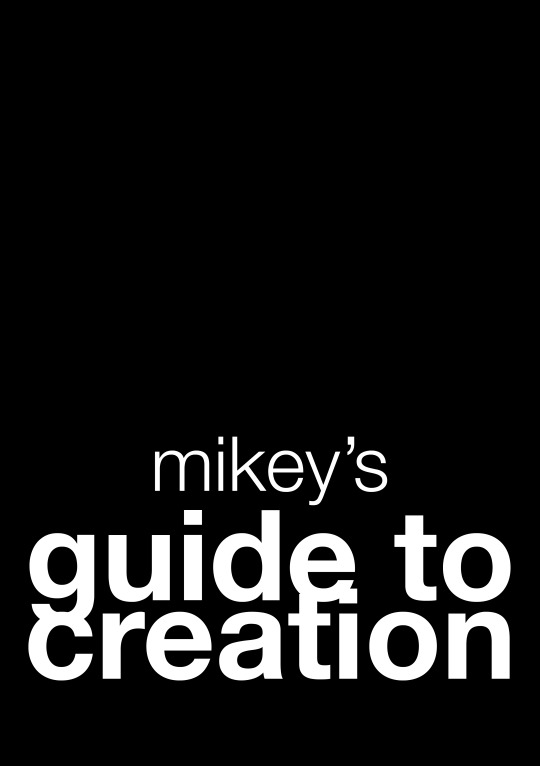
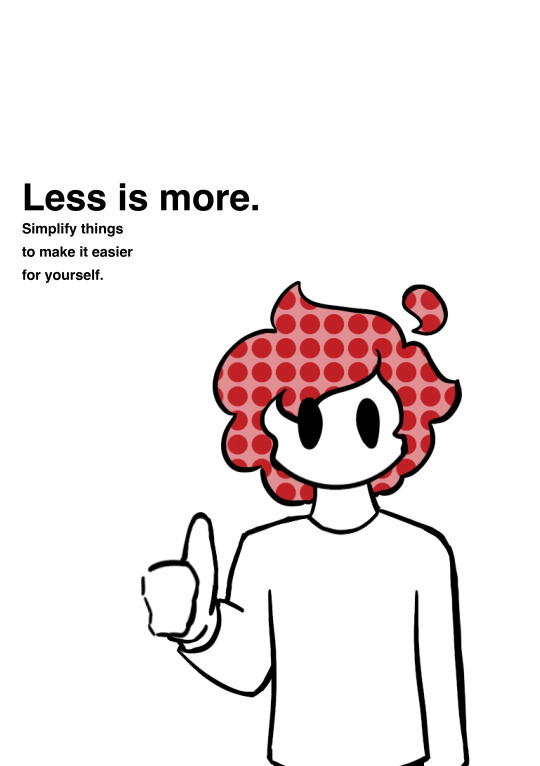

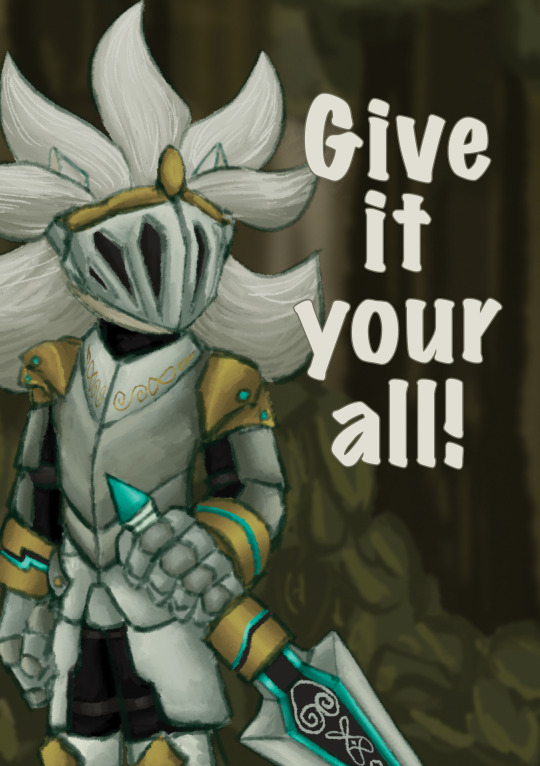
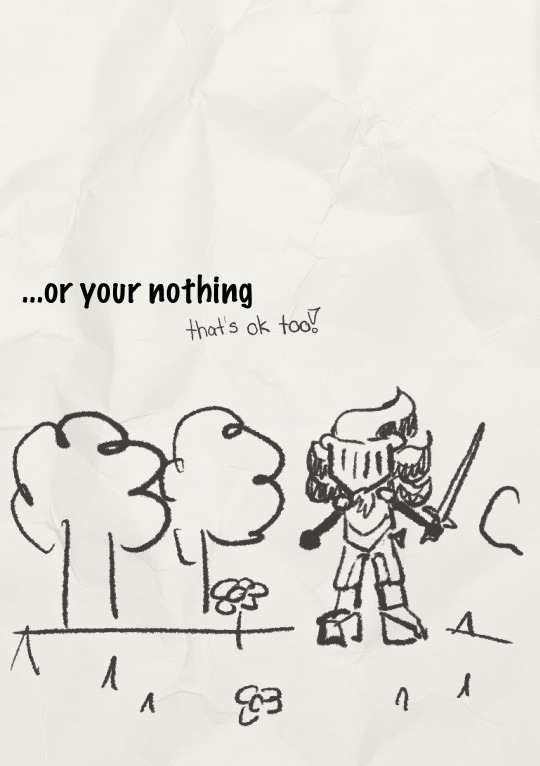

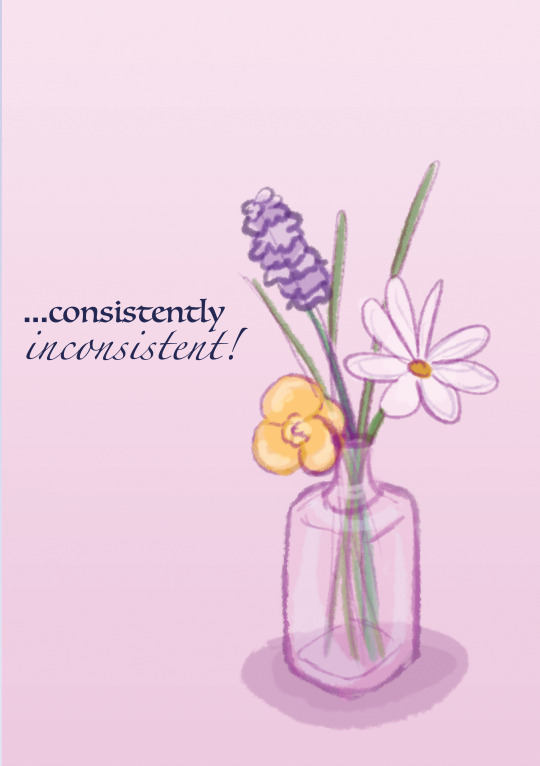
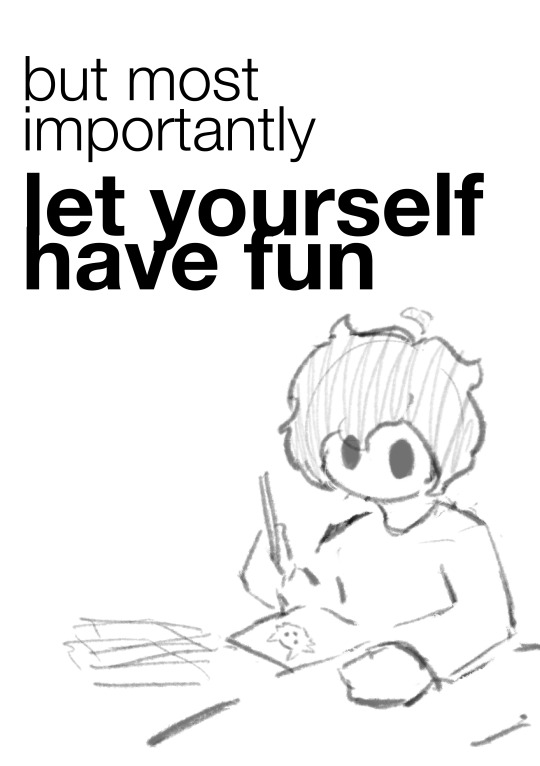
#guide to creativity#we had a school assignment to make a guide to creativity or a creative helper or whatever we wanted of that sort#as long as it was abour creating and 4 OR 8 pages we were free#so i made this!#this is supposed to be read as a childrens picture book#i snuck sonic fanart in there because im a mature 19 year old#silver the hedgehod#sonic sir lancelot#shadow the hedgehog#oc#oc art#creative guide#art block#my art#illustration#sonic fanart#sth
26 notes
·
View notes
Text
Other Words for "Look" + With meanings | List for writers
Many people create lists of synonyms for the word 'said,' but what about the word 'look'? Here are some synonyms that I enjoy using in my writing, along with their meanings for your reference. While all these words relate to 'look,' they each carry distinct meanings and nuances, so I thought it would be helpful to provide meanings for each one.
Gaze - To look steadily and intently, especially in admiration or thought.
Glance - A brief or hurried look.
Peek - A quick and typically secretive look.
Peer - To look with difficulty or concentration.
Scan - To look over quickly but thoroughly.
Observe - To watch carefully and attentively.
Inspect - To look at closely in order to assess condition or quality.
Stare - To look fixedly or vacantly at someone or something.
Glimpse - To see or perceive briefly or partially.
Eye - To look or stare at intently.
Peruse - To read or examine something with great care.
Scrutinize - To examine or inspect closely and thoroughly.
Behold - To see or observe a thing or person, especially a remarkable one.
Witness - To see something happen, typically a significant event.
Spot - To see, notice, or recognize someone or something.
Contemplate - To look thoughtfully for a long time at.
Sight - To suddenly or unexpectedly see something or someone.
Ogle - To stare at in a lecherous manner.
Leer - To look or gaze in an unpleasant, malicious way.
Gawk - To stare openly and stupidly.
Gape - To stare with one's mouth open wide, in amazement.
Squint - To look with eyes partially closed.
Regard - To consider or think of in a specified way.
Admire - To regard with pleasure, wonder, and approval.
Skim - To look through quickly to gain superficial knowledge.
Reconnoiter - To make a military observation of a region.
Flick - To look or move the eyes quickly.
Rake - To look through something rapidly and unsystematically.
Glare - To look angrily or fiercely.
Peep - To look quickly and secretly through an opening.
Focus - To concentrate one's visual effort on.
Discover - To find or realize something not clear before.
Spot-check - To examine something briefly or at random.
Devour - To look over with eager enthusiasm.
Examine - To inspect in detail to determine condition.
Feast one's eyes - To look at something with great enjoyment.
Catch sight of - To suddenly or unexpectedly see.
Clap eyes on - To suddenly see someone or something.
Set eyes on - To look at, especially for the first time.
Take a dekko - Colloquial for taking a look.
Leer at - To look or gaze in a suggestive manner.
Rubberneck - To stare at something in a foolish way.
Make out - To manage to see or read with difficulty.
Lay eyes on - To see or look at.
Pore over - To look at or read something intently.
Ogle at - To look at in a lecherous or predatory way.
Pry - To look or inquire into something in a determined manner.
Dart - To look quickly or furtively.
Drink in - To look at with great enjoyment or fascination.
Bask in - To look at or enjoy something for a period of time.
#on writing#creative writing#writing#writing tips#writers block#how to write#thewriteadviceforwriters#writeblr#writers and poets#writers on tumblr#novel writing#fiction writing#romance writing#writing advice#writing blog#writing characters#writing community#writing help#writing ideas#writing inspiration#writing guide#writing prompts#writing a book#writing resources#writing reference#writing tips and tricks#writers#writing tools#writing life#writing software
17K notes
·
View notes
Text
#home decor#home design#interior design#interiors#repurposed wine crates#shelving#creative guide#wine crates
0 notes
Text
Fantasy Guide to Political Structures

A Horse! A Horse! My X for a Horse!
Let's be honest, fantasy authors love their kingdoms and empires. You can throw a rock in a bookshop or a library in the fantasy section and you will 99.99999% hit a fantasy book that will be set in or mention either of those structures. But what are they really? What's the difference between them all? Are there any more examples of structures that would suit your WIP better? Are you using the right terms? Let's have a closer look.
Duchy

A Duchy is a small territory ruled by a Duke/Duchess. While Duchies can be found in kingdoms, some duchies were sovereign states in their own right. Duchies are usually small by land mass but some duchies such as Burgundy were extremely powerful and influential. Independent Duchies were usually apart of a kingdom but grew so powerful that they eventually broke away to become a sovereign state in their own right. An example would be modern day Luxembourg, historic Milan and Burgundy.
Principality

A principality is territory ruled by a Prince/Princess. A principality is typically smaller than a kingdom and in some instances, can be apart of a larger kingdom or be a sovereign state. Principalities have a history of having broken away from a larger kingdom or eventually becoming apart of a kingdom. A principality within a kingdom is ruled by a Prince/Princess, usually an heir of the monarch and can be used to train them up to assume the throne in the future. Examples include Monaco, Liechtenstein and Andorra.
Kingdom

A sovereign state/country that is ruled by ruling King or a Queen. A kingdom is much larger and more powerful than a principality. Kingdoms can be feudal, meaning they are ruled in a strict hierarchy or an autocracy where the monarch rules alone with minimal input from the government or constitutional where the monarch is more of a figurehead and the government has a good chunk of control. Examples include England, Thailand and modern day Spain.
Commonwealth

A Commonwealth isn't a popular choice in fantasy but it is an interesting structure. A Commonwealth in its most basic form is a collection of states that are linked by either a shared culture or history. A Commonwealth can be a politically power or an economic power, with every state allowed to participate as much as they like. Not one state leads the others, it is all one group of equals. A Commonwealth can be a good idea for a group of nations that are more powerful together with them keeping their own independence.
Federation

A Federation is a political structure that is made up of united states or countries that are under a single government but each state is still independent and rules itself. Each state can have different laws, different cultures and economies but they all answer to the single government. Examples include the United States of America.
Republic

A Republic is a territory that is ruled by leaders and heads of state that have been elected on merit and by choice of the people. Republics are not just countries but can also be much smaller areas such as cities. Republics are democratic in nature, with the people having a say in who leads them in accordance to a constitution. There are many kinds of Republic: presidential, parliamentary, federal, theocratic, unitary. Examples of Republics include the Republic of Ireland and the city of Florence.
Protectorate

A Protectorate is a country/region/territory that is independent but relies on a larger, more powerful state for protection either in a military or diplomatic sense. A Protectorate was often used by Empires in order to maintain control over an area without annexing it. There are many reasons a larger state and the protectorate would agree to this, mainly the protectorate is much smaller meaning it is far more vulnerable to attack or it has very little power when compared to other states. A Protectorate allows the territory some power to rule itself but the larger state may feel the need or desire to interfere in the dealings of the territory. Examples of protectorates include the client kingdoms of the Roman Empire like Egypt before its annexation and Puerto Rico.
Empire

An Empire is a collection of nations that are united under one sovereign head of state or government. An Empire is formed by one nation steadily taking control of other nations, either through straight invasion and colonization or acquiring them through marriage and other less violent ways. An Empire is powerful mainly because it can drum up more resources, more influence and more military power. An Empire might impose the traditions, beliefs and culture of its principal nation - the nation that started it all - onto its colonies for better control and feeling of uniformity. Empires never last, that is something to always remember. Empires will eventually fragment due to the vast size and sometimes revolt among the conquered states. Examples of empires include the Roman Empire, the Byzantine Empire, the Ottoman Empire.
#fantasy guide to political structures#kingdoms#empires#writeblr#writing reference#writing resources#writing#writing advice#writer#writer's problems#spilled words#writer's life#fantasy guide#creative writing#writing fantasy#writing community#writing inspiration#writing prompt#writing problems#on writing#writers#writing help#writing tips#wtwcommunity#writing guide
4K notes
·
View notes
Text
Developing Backstory: Bringing Characters to Life

1. Where It All Started: The Character’s Origin
Place of Birth: Where did your character first see the world? Think about the impact of this place—was it a busy city where they had to fight for attention or a quiet village where everyone knew everyone’s business? This location doesn’t just say where they’re from; it shapes how they see the world.
Family and Upbringing: What was their family like? Were their parents loving or distant? Maybe they were raised by someone other than their parents—a mentor, an older sibling, or even alone. Family (or the lack of it) is usually one of the most significant factors in shaping who someone becomes.
Society’s Expectations: What was expected of them when they were young? Possibly, they were born into wealth, with all the pressure to continue the family legacy, or maybe they were raised to be invisible in a world where survival mattered. How does this influence who they are now? Do they accept or reject those expectations?

2. Childhood Events That Left a Mark
First Taste of Conflict: Think about the first time the character realized the world wasn’t a perfect place. Maybe they witnessed violence or faced betrayal. What was that moment, and how did it stick with them? This moment usually lays the foundation for the character’s emotional landscape—fear, hope, ambition, or distrust all come from these early life lessons.
Childhood Dreams: When they were young, what did they want to be? Every child has dreams—did they want to be a knight, a scholar, or even just someone who could travel the world? Did they have to give up these dreams? How does that lost dream shape them now?
Formative Relationships: Who was their first best friend, mentor, or enemy? Childhood friendships and relationships often create deep bonds or wounds that last into adulthood. Did they have a mentor who taught them everything, only to betray them? Did they lose a childhood friend that still haunts them?

3. The Teen Years: Where They Start to Become Who They Are
Trials and Tribulations: What’s the biggest challenge they faced as they grew up? Was it losing a loved one, failing at something important, or maybe being forced into a role they didn’t want? These teenage years are where the emotional armor starts forming—how did the difficulties they faced shape them into the person they are now?
Education or Training: How did they learn what they know? Were they formally trained by an institution, learning everything by the book, or did they learn through experience, like a street-smart survivalist? What impact does their education or lack of it have on how they interact with others?
Teenage Bonds: Did they have a first love or a first major falling out with someone close to them? These experiences often create emotional scars or connections that they carry with them into adulthood. How does that past friendship or romance influence their behavior now?

4. Key Life Events: The Big Moments That Define Them
Trauma or Loss: Was there a moment that changed everything? Think about a significant loss—maybe a loved one, their home, or a sense of identity. How does this event affect their worldview? Do they build walls around themselves or dive into relationships with reckless abandon because they fear losing more?
Victory or Failure: Did they experience a moment of triumph or devastating defeat? Success and failure leave their marks. Were they celebrated as a hero once, leading them to overconfidence, or did they fail when everyone was counting on them, leading to crippling self-doubt?
Betrayal: Was there a betrayal that shaped their adult relationships? Whether it is a friend, family member, or lover, betrayal often changes how we trust others. Do they close themselves off, constantly expecting betrayal, or try to rebuild trust, afraid of being left alone again.

5. Where They Stand Now: The Present Moment
What Drives Them Today: What’s the one thing pushing them forward now? Is it revenge, the need to restore their family’s honor, or maybe even just survival? Whatever it is, this motivation should tie directly back to their experiences.
Emotional Baggage: What unresolved emotional wounds are they carrying? Everyone has scars from their past—some are visible, others not so much. How do these emotional wounds affect how they treat others, how they react to conflict, and how they move through the world.
Current Relationships: Who’s still in their life from their past, and how do they feel about it? Did they reconnect with someone they thought they’d lost, or are they haunted by unresolved issues with people from their past? Do they have any ongoing tensions or regrets tied to these people?

6. Tying Themes to Their Backstory
Cultural or Mythological Influence: How does their personal story tie into the larger world’s mythology or culture? Do they carry a family legacy, a curse, or a prophecy that hangs over them? How does this influence their interactions with others and their perception of themselves?
Recurring Symbols: Are there objects, dreams, or people that keep showing up in their life, symbolizing their journey? Perhaps a recurring nightmare haunts them, or they carry an object from their past that’s both a source of comfort and pain

7. Character Arc: The Journey from Past to Present
How Does Their Past Shape Their Growth?: Every character has emotional baggage that needs resolving. How does their backstory drive their arc? Do they need to forgive themselves, let go of the past, or accept who they’ve become to move forward?
Unanswered Questions from the Past: Are there any mysteries in their backstory they need to solve? Maybe they’re unaware of their true parentage, or maybe there’s a forgotten event from their childhood that will resurface and change everything.
#writerscommunity#character backstory guide#writer community#writerscorner#creative writers#writeblr#writerblr#writers on tumblr#writers#free resources#tips and tricks#writing advice#fantasy writing#fiction writing#tumblr writing community#writing a book#writing#writing guide#story writing#writing help#writing resources#writing stuff
6K notes
·
View notes
Text
Creating Emotionally Devastating Scenes.
Crafting a scene that earns the total sympathy of your readers can be challenging, but it's not impossible. Most emotionally devastating scenes fail at two things, but when these are done right, the results can be powerful.
⚪ The Important Concepts for Writing an Emotionally Devastating Scene
1. The Build-Up,
2. Breaking the Dam.
Before I explain these concepts, let me share a case study.
⚫ Case Study
I wrote a story about a young orphan named Jackie and her younger brother. Their village was burned down, leaving them as the only survivors.
For the next few chapters, readers followed their painful journey and their struggle to survive. The younger brother had a heart problem, and Jackie vowed to become a cardiologist to save him.
She was very ambitious about it, but at the time, it was very ironic. Later in the story, when they encountered a tragic living condition with a family, the brother died while telling his sister how much he missed their parents.
When her brother was fighting for his life, she was sent out of the room, only to be let in again to see his cold, lifeless body.
⚪ Explanation of Concepts
1. The Build-Up
The build-up is extremely important when you aim to convey strong emotions. Here's a secret: if you plan for a scene with strong emotions, start leaving breadcrumbs from the very beginning of the story.
Take the previous case study. I carefully built up their journey so people could easily relate and feel the pain of the older sister during her brother's sudden death.
You need to give the situation enough reason to feel utterly hopeless and devastating. Gradually cultivate the tension until it's ready to let loose.
⚫ Understanding the Use of Breadcrumbs.
Breadcrumbs in stories ensure you utilize the time you have to build up certain emotions around your characters.
At the beginning of my story, Jackie’s fate was already pitiable, but she survived every hurdle. This gave the readers enough to feel for her while still leaning away from the outcome. When I built enough, I introduced her brother's sudden death.
Hence, leave your breadcrumbs while leaning away from the outcome.
⚪ How to Properly Leave Breadcrumbs
When building up your story, consider these elements:
☞ Character Relatability: The characters need to be realistic to draw readers into the story. This helps readers invest themselves in your story.
☞ Realistic Emotional Pain: Just as characters need to be relatable, their emotions need to be realistic and not appear forced.
☞ Create a Strong Emotional Attachment: Give them something they care about or that has the power to ruin their lives in any way. It could be something that makes them happy or something their happiness relies on. When it's time, snatch it away without remorse.
☞ Have a Backstage Struggle: This struggle keeps readers occupied, so they won't see the outcome coming. For example, Jackie’s constant struggle to find food and shelter keeps readers engaged while the impending tragedy looms in the background.
☞ Attach Believable Elements: For a realistic character, emotion, and struggle, attach believable elements. It could be death, ailments, sickness, disorder, disappointment, failure, etc.
Now that we've covered the build-up, let's move on to the next crucial part.
2. Breaking the Dam
This is when you make your readers feel the strong emotions alongside your characters. All the tension you’ve been building up is released, making all emotions come into play.
☞ Break Your Strong Attachment: Cut off your strong attachment from your character when they least expect it or at a point when they couldn't use more struggles (i.e when they are helpless).
This will not only evoke readers’ emotions but also pique their curiosity as they wonder how the character will survive the situation.
☞ Description of Sensory Details to Invoke Emotions: The advice of "show, don't tell" will be really helpful here. It's crucial to ensure that the final execution matches the build-up.
A well-crafted build-up can fall flat if the emotional release isn't handled effectively. To avoid this, blend the climax seamlessly into the narrative, making it feel natural and impactful.
Reblog to save for reference! 💜
#writing#writeblr#writers on tumblr#writer#writers and poets#writerscommunity#writing community#wattpad#ao3 writer#a03 writer#writers of tumblr#aspiring author#aspiring writer#writing advice#writing blog#creative writing#writing discussion#writing encouragement#writing guide#writing help#writing ideas#writing journey#writing life#writing motivation#writing novels#writing on ao3#writing process#writing resources#writing reference#writing requests
2K notes
·
View notes
Text
HOW TO WRITE ROMANTIC ATTRACTION FOR DUMMIES
For anyone who wants to learn, (especially aro/ACE, aspec, ect.)
Requested by the lovely @darkandstormydolls
Alrighty! Welcome back or welcome to my blog! I'm dipping my toes back into the category of posts that gained me my exposure!
So if you're here, you want to know how to write romantic attraction/romance!
Strap in and let's begin!

(Pls spread this to people you think would benefit from seeing it, or anyone who requested it bc I forgot, ANY ASPECS)
Step one -
Your characters must admire one another at the beginning, Romantic feelings usually do not present themselves as obvious until you really think them through, meaning your characters may not notice they have a crush until it's too late
These are general statistics and light stereotypes. So feel free to not use this tip:
Male characters usually tend to notice physical things first, like body shape, hair, skin, clothing, the way their lover moves, ect
And Female Characters Generally tend to notice more small things and personality-based traits first, like their lover's humor, speaking mannerisms, shifts in expression, ways they fidget, emotion in their voice, ect.
And someone who is in love will generally show more interest in this particular person's movements, actions, words, and anything in general.
Step 2 -
The character will show more interest in sharing their love language with their lover/crush
Physical touch - People with physical touch love languages may want to hold hands, cuddle, hug, or just lean on their crush whenever they are close to them moreso than they want to with others
Gift giving - Gift givers will want to get more gifts more often for their crush, probably thinking of them whenever they see little trinkets or wanting to get them big gifts for special occasions or signs of appreciation
Acts of Service - Acts of service people will offer to do extra favors and a bunch of extra stuff they don't have to do twice as much as normal
Words of Affirmation - Flattery, they will generally flood their crush with kind words and compliments
Quality time - Quality time people will want to spend time with their crush at almost every turn, and when they want company, will turn to their crush first
Step 3 -
After a while, these urges while become very prominent and more noticeable to the person having them
They may find themselves fantasizing about their crush or having them show up in their thoughts more and more, feeling nicer and happier when they're around, or when they're thinking about them
Smiling when they think about them, cutsey little fluff thingies like that
A crush is essentially: I want to date that, I want to be near that always, I want to marry that, I want that to snuggle me (or other love languages)
Or in simpler terms: if that asked me out, I would say yes (or at least want to say yes if your character is in denial)
Step 4 -
The character's urges to be close to this person grows strong enough that they do smth about it, whether prompted by another character. Or they just don't know I how to not anymore (like when you wanna eat candy and you don't want to, but you do anyway bc I JUST NEED THE CHOCOLATE OKAY?)
(Or for Aro/Ace, garlic bread)
People who are in love are generally very prone to be all dreamy and poetic and VERY EXTREMELY BIASED towards their crush
Then Yada Yada they kiss & shit
You're welcome, BYEEEEEEEE 👋
Happy writing!
Love you! Thanks for reading, And Ghost Tumblr Mother says go drink some water and have a snack, you've earned it, and you are beautiful <333
Have a good day! :]
@blue-kyber @thisisntrocket @cosmolumine @i-do-anything-but-write @paeliae-occasionally
@supercimi @the-letterbox-archives @sunglasses-in-the-bentley @vyuntspakhkite-l-darling @artsandstoriesandstuff
@corinneglass @wyked-ao3 @urnumber1star
#ellia writes#ellia's rambling#ellia's haunted house#ghost party#creative writing#fiction writing#writing community#writer things#writerscommunity#writers on tumblr#writeblr#writing#writers#writer#asexuals writing romance#aspec writing romance#aro/ace writing romance#writing romance#romance writing tips#romance writing#writing tips#writing guide#romantic attraction
4K notes
·
View notes
Note
I recently just found your account and LET ME TELL YOU I AM SO AMAZED BY THE AUS AND ARTWORK YOU MAKE! And do you have any plans on continuing the abyss body au? ( i just love the concept so much)
Thank you so much!!!!
And yes, I do plan on continuing it! It was giving me some trouble in deciding what direction I want it to go and whose POV i want to focus most, but I think I finally found a direction! I struggle to write anything that is meant to be kinda pointless/ just for fun, so I usually use these AU’s to explore a specific concept, and since I didn’t know if I wanted this to lean more on a funny casual side, or more towards a suspense, almost horror vibe, it really made me fight for it lol
But I got it!! I think!!!! Here, have some Endless Abyss doodles!!!!




Im highly considering making this a proper fanfic and posting it on Ao3, but I think I would first write it all down and then post the chapters weekly or so, just so I can limit myself and don’t spend another year writing it every 2-3 months like I’m doing my current fanfic Locked & Loaded (which I’m not abandoning!!!! If I’m finishing any fanfics it’s that one!!!! I just take my time with it)
And just because I need everyone to understand just how much trouble this AU is giving me, here is a collection of the first 3 failed attempts to plan out the story (blurred because I’m still going to use a few things here and there)

#this may have been stressing me out but its also been a great creative exercise#really making me fight for it lol#komm’s endless abyss travel guide#doodles#svsss#shen yuan#shen qingqiu#luo binghe#bingqiu#bingyuan#exposing my struggles so others know its ok to struggle with creating
475 notes
·
View notes
Text
WWC’s A Beginner’s Guide to Academic Research
We are pleased to present WWC’s A Beginner’s Guide to Academic Research!
This pandemic project has been over 2 years in the making and we hope it will greatly assist any of our readers who are eager to conduct in-depth research but may be at a loss where to start.
Go to the Guide Here
The guide is split into 6 parts:
Introduction and Table of Contents
Part 1: Getting Started
Part 2: Searching for Sources Online
Part 3: Evaluating Sources
Part 4: Navigating Academic Sources
Part 5: Recognizing Your Limits
Each portion of the guide has links to connect to the previous and next sections. While it is possible to view tumblr pages on phones and tablets through the app, we highly recommend viewing this guide via browser on desktop whenever possible. Tumblr page formatting is better suited for browsers and each section is very dense with information, which will make scrolling in the app or on your dashboard difficult.
Future FAQ/ Discussion:
As noted in part 5 of the guide, for the next two weeks, we will be keeping an eye on the notes for this post. If you have further questions or comments about academic research, drop them here and we will select the most pertinent to respond to in a later post.
If you find this guide helpful, we request that you consider tipping the moderators below for the work and time required from conception, to drafting, formatting and debugging. Their ko-fis are listed below:
Rina: https://ko-fi.com/arcanabean
Marika: https://ko-fi.com/5h1njuu
5K notes
·
View notes
Text
Writing Advice: Worldbuilding as Tension
One of the most common pieces of advice/points of critique I see for writers of all skill levels, is avoiding exposition dumps, often accompanied by the age old 'show don't tell'.
When writing fiction in general, but especially sci-fi and fantasy, it's important that the reader understands how your world differs from our own. And worldbuilding is one of the few places where you're less likely to get hit by the proverbial SHOW hammer, since some things, like the rules of your magic system, are difficult to show. So telling becomes more permissible.
However, it can be incredibly tempting to just infodump at every opportunity. Especially for those of us who have a wiki with more words than the finished project will have. But as I'm sure you've heard before, doing this can break immersion and destroy the pacing of your narrative.
While there are multiple ways to make exposition engaging, I'm going to focus on the approach I use most commonly: The Drip Feed.
Filling an Ocean One Droplet at a Time
Before we get into the actual methodology, I want to take a moment to dissect how and why exposition dumps can be problematic.
The Problem: Context, Relevancy, and Retention
Context is both the thing we're trying to communicate, and the source of excessive exposition. It starts simple, like maybe the reader needs to know that the main character is poor. And I guess I should explain why they're poor. Next thing you know you've spent 4 pages describing the socioeconomics of your world.
That's what I call 'context chaining'. Since everything in fleshed out worlds is interconnected, it can be very easy to just keep on filling in the gaps. Preemptively answering any questions the reader might have. The problem?
Relevancy. When you introduce a ton of worldbuilding in one fell swoop, the vast majority of it won't be relevant to the current place in the narrative, even if it will eventually be relevant for the story overall. Which, you guessed it, hurts:
Retention. Without immediate relevant context for the worldbuilding you introduce. Readers won't have anything to anchor the information too. Calling back to the example I used earlier, readers will remember that the character is poor, and they will likely remember why. Anything beyond that is unlikely to be retained.
The solution?
Restraint and Trust
For many of us, the world we've built is a large draw of the narrative we're crafting. However, one of the best ways to draw people into your world is to talk about it as little as possible. But how will they know about x?? They won't, until it matters.
Now I'm not talking about soft worldbuilding. This will work for both hard and soft worldbuilding (honestly it's even better for hard worldbuilding).
Instead of straight up telling the reader about the world and all of its intricacies. Introduce the most complex aspects as questions that you answer bit by bit throughout the narrative. As an example, maybe our poor character is struggling to buy food because they went into debt casting spells.
Suddenly, the reader is wondering: Why do spells cost money? Who controls the supply of magic and/or components? Is spellcasting something everyone can do? What kinds of magic are more valuable than eating? and so many more.
But here's the key: don't answer them. At least, not until absolutely necessary or there's an organic place to do so. Wait until the perspective character is directly interacting with one of those questions. Maybe they walk past a trickling fountain, revealing that the mana wells are running dry. And later debt collectors come for the main character, revealing who controls the mana.
Unanswered questions are a huge source of tension, and worldbuilding can provide a subtle sustained undercurrent that you can leverage to propel the narrative in slow points and/or make your payoffs hit even harder. All you have to do is answer the right question at the right time.
The best part of this method is that by waiting until your perspective character is engaging with a part of your world. It allows you to convey exposition and character at the same time. But what about worldbuilding that the characters don't interact with directly? It doesn't matter.
Well it does, to you as the author. But in general, if something doesn't matter to at least one of your characters, it won't matter to your readers. If your character isn't a politician, they aren't going to care about the intricacies of your political system. So why would the reader?
In short, keep any worldbuilding closely tied to your characters' experience, and let the reader wonder. The end result is a smoother and more engaging learning curve that pulls the reader in. Giving them the satisfaction of putting the pieces together themselves.
If you have any questions or additional thoughts let me know!
#creative writing#writing#writing guide#writing advice#writing tips#worldbuilding#pacing#storytelling#fiction#writeblr#writing community
318 notes
·
View notes
Text
Body Language
Part 1 Here (Angry)
When someone is…
Happy

Face:
Smiling
Crinkled skin around eyes
Lifted cheeks
Corners of the lip are raised
Warm eye contact
Smile lines
Voice:
Laughter
Squealing
Exited shouts/exclamations
Cheerful tone
Higher pitch
Uplifted inflections
Smooth
Gestures/Posture:
Relaxed/open posture
Nodding
Open palms
Bouncy movement
Animated/talking with hands
#creative writing#my writing#snippet#short story#story#writers on tumblr#writers community#writing#writeblr#writers and poets#words#body language#fic prompt#prose#prompt list#writing prompt#guide#aspiring author#aspiring writer#writerscommunity#writersbloxx
297 notes
·
View notes
Note
hi there! im a fan of your page 💕
can you give me the best studying techniques?
hi angel!! @mythicalmarion tysm for asking about study techniques 🤍 i'm so excited to share my secret methods that helped me maintain perfect grades while still having a dreamy lifestyle + time for self-care!! and thank you for being a fan of my blog, it means everything to me. <3
~ ♡ my non-basic study secrets that actually work ♡ ~
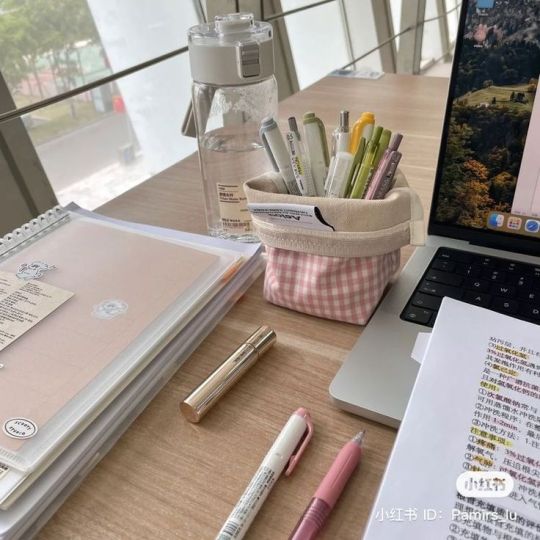

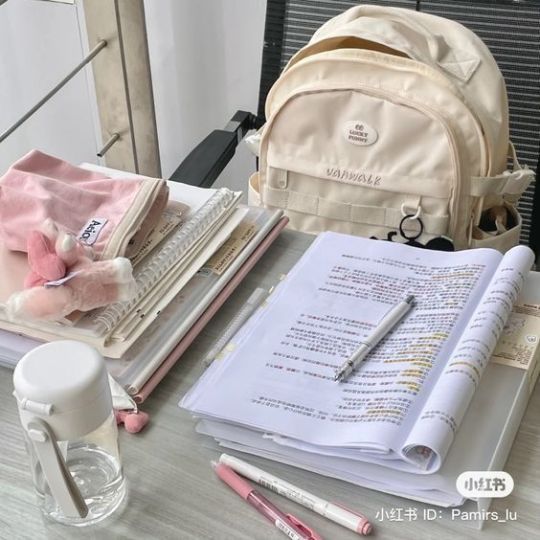

(don't mind the number formatting)
the neural bridging technique this is literally my favorite discovery!! instead of traditional note-taking, i create what i call "neural bridges" between different subjects. for example, when studying both literature + history, i connect historical events with the literature written during that time. i use a special notebook divided into sections where each page has two columns - one for each subject. the connections help you understand both subjects deeper + create stronger memory patterns!!
here's how i do it:
example:
left column: historical event
right column: literary connection
middle: draw connecting lines + add small insights
bottom: write how they influenced each other
the shadow expert method this changed everything for me!! i pretend i'm going to be interviewed as an expert on the topic i'm studying. i create potential interview questions + prepare detailed answers. but here's the twist - i record myself answering these questions in three different ways:
basic explanation (like i'm talking to a friend)
detailed analysis (like i'm teaching a class)
complex discussion (like i'm at a conference)
this forces you to understand the topic from multiple angles + helps you explain concepts in different ways!!
the reverse engineering study system instead of starting with the basics, i begin with the most complex example i can find and work backwards to understand the fundamentals. for example, in calculus, i start with a complicated equation + break it down into smaller parts until i reach the basic concepts.
my process looks like:
find the hardest example in the textbook
list every concept needed to understand it
create a concept map working backwards
study each component separately
rebuild the complex example step by step
the sensory anchoring technique this is seriously game-changing!! i associate different types of information with specific sensory experiences:
theoretical concepts - study while standing
factual information - sitting at my desk
problem-solving - walking slowly
memorization - gentle swaying
review - lying down
your body literally creates muscle memory associated with different types of learning!!
the metacognition mapping strategy i created this method where i track my understanding using what i call "clarity scores":
level 1: can recognize it
level 2: can explain it simply
level 3: can teach it
level 4: can apply it to new situations
level 5: can connect it to other topics
i keep a spreadsheet tracking my clarity levels for each topic + focus my study time on moving everything to level 5!!
the information architecture method instead of linear notes, i create what i call "knowledge buildings":
foundation: basic principles
first floor: key concepts
second floor: applications
top floor: advanced ideas
roof: real-world connections
each "floor" must be solid before moving up + i review from top to bottom weekly!!
the cognitive stamina training this is my absolute secret weapon!! i use a special interval system based on brain wave patterns:
32 minutes of focused study
8 minutes of active recall
16 minutes of teaching the material to my plushies
4 minutes of complete rest
the specific timing helps maintain peak mental performance + prevents study fatigue!!
the synthesis spiral evolution this method literally transformed how i retain information:
create main concept spirals
add branch spirals for subtopics
connect related concepts with colored lines
review by tracing the spiral paths
add new connections each study session
your notes evolve into a beautiful web of knowledge that grows with your understanding!!
these methods might seem different from typical study advice, but they're based on how our brains actually process + store information!! i developed these through lots of research + personal experimentation, and they've helped me maintain perfect grades while still having time for self-care, hobbies + fun!!
sending you the biggest hug + all my good study vibes!! remember that effective studying is about working with your brain, not against it <3
p.s. if you try any of these methods, please let me know how they work for you!! i love hearing about your study journeys!!
xoxo, mindy 🤍
glowettee hotline is still open, drop your dilemmas before the next advice post 💌: https://bit.ly/glowetteehotline

#study techniques#academic success#unconventional study methods#creative study tips#neural bridging#shadow expert method#reverse engineering study#sensory anchoring#effective studying#minimal study guide#glowettee#mindy#alternative learning#academic hacks#study inspiration#cognitive stamina#learning tips#study motivation#unique study strategies#self improvement#it girl energy#study tips#pink#becoming that girl#that girl#girlblogger#girl blogger#dream girl#studying#studyspo
176 notes
·
View notes
Text
Character Flaws and Their Meanings
Impulsiveness : Acts on instinct without careful planning. Perfectionism : Sets unrealistically high standards, leading to self-criticism. Indecisiveness : Struggles to commit to decisions or choose a path. Arrogance : Overestimates one’s abilities and dismisses others. Pessimism : Habitually expects negative outcomes in most situations. Cynicism : Distrusts the motives and sincerity of others. Overconfidence : Places excessive faith in one’s skills, often underestimating risks. Stubbornness : Resists change and refuses to adapt to new ideas. Jealousy : Feels envious of others' success or possessions. Insecurity : Experiences frequent self-doubt and a lack of confidence. Procrastination : Tends to delay tasks, often leading to missed opportunities. Passivity : Avoids taking initiative and relies on others to act. Aggressiveness : Responds with hostility or force rather than reason. Selfishness : Prioritizes personal gain over the welfare of others. Fragility : Is overly sensitive to criticism and easily discouraged. Egotism : Constantly focuses on oneself and one’s own importance. Defensiveness : Quickly rejects or rationalizes away critique or new information. Manipulativeness : Exploits others to fulfill personal needs or desires. Recklessness : Shows a careless disregard for potential risks or consequences. Resentfulness : Holds lingering bitterness and grudges over perceived wrongs. Distractibility : Finds it hard to maintain focus amid competing interests. Impatience : Lacks the willingness to wait, often spoiling opportunities to learn. Perfunctory : Performs actions in a mechanical, uninspired manner. Self-Doubt : Consistently questions personal abilities and decisions. Arbitraryness : Makes decisions based on whim rather than reason or evidence. Rigidity : Is inflexible and unwilling to consider alternative viewpoints. Gullibility : Trusts too easily, often leading to being misled or deceived. Obsession : Becomes excessively fixated on particular ideas or details. Aloofness : Maintains emotional distance, appearing detached or indifferent. Intolerance : Refuses to accept differing perspectives or lifestyles.
Writing Advice for Brainstorming
Mix genres and time periods: Experiment by combining elements from different eras or genres to create unique settings and narratives.
Use "what if" scenarios: Pose unexpected questions (e.g., What if time travel operated on emotions rather than mechanics?) to spark novel ideas.
Draw from diverse mediums: Engage with art, music, or even scientific papers to inspire unexpected plot twists.
Embrace absurdity: Let illogical or surreal ideas guide you; sometimes the wildest thoughts lead to compelling stories.
Reverse clichés: Identify common tropes in your favorite genres and deliberately invert them to create fresh perspectives.
Incorporate personal anomalies: Transform your idiosyncrasies and personal struggles into rich, multi-dimensional characters.
Use mind-mapping: Visually plot your ideas in a freeform way to uncover hidden connections between disparate elements.
#writing#writeblr#on writing#writing tips#how to write#writers block#creative writing#writers and poets#thewriteadviceforwriters#writers on tumblr#writing project#fiction writing#novel writing#writing a book#writing advice#romance writing#writing characters#writing community#writing guide#writing inspiration#writing prompts#writing ideas#writing reference#writing blog#writing resources#writing help#writing software#writerscommunity#writers#writing tips and tricks
9K notes
·
View notes
Text
0 notes
Text
Fantasy Guide to Early 20th Century Trains

Trains were a popular means of transportation during the early 20th century. The previous decades saw to the explosion of more trains, more services and more tracks linking country communities which were isolated from cities and larger towns. So what do we need to know about trains in the early 20th century?
Typical layout

A basic layout of a train is as follows: passenger compartments, dining cars, luggage and guard vans.
Compartments: Compartments are where the passengers sat. They were divided between three classes – first, second, third. First class compartments were the most expensive. The seats were upholstered, and the floors were often carpeted. They were much larger than the other class compartments. They would be fitted with gas light like the rest of the train, the windows would have curtains, and the walls would often be panelled with wood. Second class compartments were less luxurious but pretty much the same as the first class only smaller and less grand. Third class would feature wooden benches or seats fitted with cushions or fabric, they were smaller and often more crowded. Compartments could be offered as corridor compartments which offered more movement between compartments and cars. Compartments would offer seating areas and areas to store hand luggage. Some trains travelling overnight would offer sleeper cars which offered beds and an area to wash.
Dining Cars: Dining cars were offered on some trains. There would be tables for the passengers to eat and get something to drink. Dining cars were usually offered only to certain classes or segregated by class.
Luggage Cars: Where large luggage would be stored.
Guard Vans: Where railway security staff could get warm. It also held a stove and hand-operated brakes which the designated guard would use to slow the train if needed.
Separation


Trains in this era were divided by class and in some case race. Unlike the American states and South Africa where there were laws preventing certain races from mixing with others or from using any class other than third class, Europe was a little more forgiving in the case of race. However, this is not to say there was no segregation. This was Europe at the height of the age of Empire. People who hailed from the ‘colonies’ were discriminated through subtler means than simple prevention, they would be discouraged from attempting to use the upper class tickets and sometimes they were even treated not as well as other passengers. Class was the main division on the train. First class of course had more ability to move, more access to amenities. They often had separate dining cars where they could sit down to full meals. Larger trains might even offer some other common areas such as smoking compartments. Second class were sometimes permitted to dine in the dining cars but may not have been allowed access to full meals. Third class was not permitted access to the dining cars, often having to bring along meals or buy food at the station before departure. The classes were not allowed to mingle. In cases of a first-class person travelling with a servant, they had the choice to either purchase a first-class ticket for their servant or leave them in third class.
Train and Station Staff


Trains did not run by themselves. The passengers and the train had many needs and there had to be an army of staff available to keep things chugging along *hehe*. That being said, the train staff weren’t the only people who kept things going smoothly, the station staff at each stop would also help out the staff and the passengers.
On the Train:
Drivers: These were the people who drove the train.
Firemen: These were the people who shovelled coal and kept an eye on the steam pressure.
Guards: The guards were there to keep the passengers safe. They sometimes checked tickets and would patrol the luggage cars, mainly to keep an out for anybody sneaking onto the trains without a ticket.
Conductors: Conductors would go from car to car to check tickets, collected any outstanding fares and kept an eye on things in the compartments.
Engineers: Would travel on the train to help out with repairs on the train.
Dining car staff: Such as maids to serve tea and coffee, waiters to serve food and if the train is large enough, kitchen staff and bartenders.
The Station:
Station Masters: Was the person in charge of the station, overseeing the flow of trains and passengers through the station.
Porters: Handled the luggage.
Signalmen: Oversaw the signals to keep the trains on track *hehe*.
Parts of the train

The train is a beast of many parts. A train in this era is a steam train, which links of cars connected together behind a steam engine.
Buffers & Buffing Gear: These are the parts of the train built in to absorb impact.
Cars: The segments of the train.
Couplers: This is what connects the train cars together.
Cowcatcher/Pilot: This is the frame that sits at the very front of the train used to clear things off the track.
Carriages: These are the cars that the passenger compartments are.
Headlamp: This is the light at the front used to improve visibility.
Freight Cars: Used for transporting goods.
Locomotive: This is the train’s engine. It is the driving force of the train, where the driver and the firemen would work.
Truck: The framework that connects the axles to the wheels.
Smokebox: Where the exhaust system of the stream engine is housed.
#fantasy guide to early 20th century trains#edwardian era#belle epoque#trains#writing stuff#writing inspiration#writing problems#writing tips#writing community#writing advice#writeblr#creative writing#writing prompt#writers on tumblr#writers#on writing#writing reference#writing resource#for reference#writing refs#fantasy guide#wtwcommunity#writing help
1K notes
·
View notes